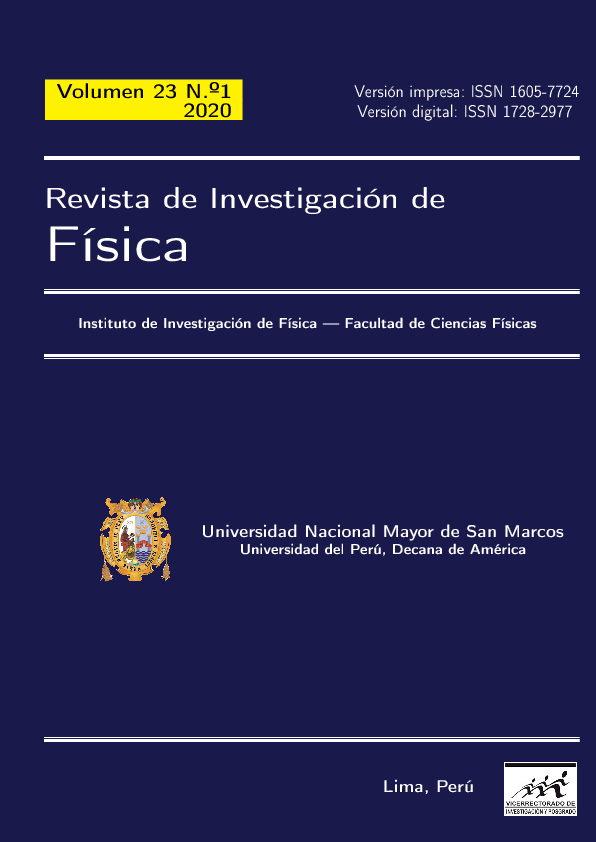Español
DOI:
https://doi.org/10.15381/rif.v23i1.20287Keywords:
Local vectorial quantum, radius of action, conical spiral, variable speed of light, quasi- equilibrium condition of vectorial quantaAbstract
The propagation of light in 99,99 % of empty space existing in natural systems is investigated to a new level of description, assuming that light is the only inuence that can transmit information. First, the electromagnetic eld is considered as a non-inertial reference system and it is deduced by geometric reasoning that the propagation vector of the electromagnetic wave changes direction at each instant of time due to the angular velocity associated with the plane of vibration of the electric/magnetic eld. Consequently, the actual path of a ray of light would have the shape of a conical spiral. The geometric analysis of the path of light rays in a vacuum lead to a simple formulation of the parametric equations that would represent the essential kinematics of the points of the empty space of natural systems (the substrate). This leads to an equation that describes the variation of the speed of light over time. This equation indicates two possible opposite directions for the speed of light in the vacuum of natural systems. By introducing the local vector quantum model, which is dened as the quantiable angular velocity at all spatial scales that direct light rays, it is shown that the speed of light in free space (common to the senses) would be constant with respect to a hypothetical inertial reference system, where the vector quantum associated with the ray of light is ignored. It is shown that the vector quantum model allows the double direction of the speed of light to be interpreted in terms of specular symmetry, considering that, if one of the directions of the vector quantum corresponds to the propagation of light in the actual empty space of natural systems, the other direction would correspond to the propagation of light in the virtual space of natural systems. Also, it is shown that the vector quantum model allows establishing a quasi-equilibrium condition between the vectorial quanta associated with said actual and virtual spaces, which would explain the perception of the rectilinear propagation of light in the free space common to the senses.
Downloads
Published
Issue
Section
License
Copyright (c) 2020 Oscar Monroy, Marco Merma

This work is licensed under a Creative Commons Attribution-NonCommercial-ShareAlike 4.0 International License.
THE AUTHORS RETAIN THEIR RIGHTS:
a. The authors retain their trademark and patent rights, as well as any process or procedure described in the article.
b. The authors retain the right to share, copy, distribute, perform and publicly communicate the article published in the Revista de Investigación de Física (for example, place it in an institutional repository or publish it in a book), with an acknowledgment of its initial publication in the Revista de Investigación de Física.
c. The authors retain the right to make a subsequent publication of their work, to use the article or any part of it (for example: a compilation of their works, notes for conferences, thesis, or for a book), provided that they indicate the source. of publication (authors of the work, journal, volume, number and date).






